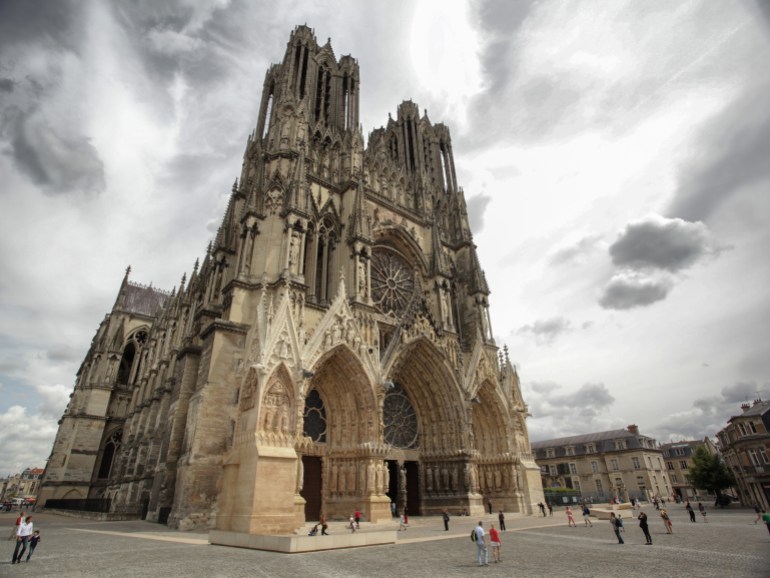The protection of heritage and archaeological buildings for future generations represents a real challenge for developers and architects, and there are multiple ways to preserve the archaeological buildings, publicize their historical context, and use them to revitalize the heritage and cultural values of different societies, because architectural heritage is often damaged by negligence or wrong methods of restoration.
Architectural heritage is closely associated with architecture programs, which teach how to deal with a heritage or archaeological building, in a way that preserves the original design, and assesses the importance of the monument and its historical context that should form the core of the restoration process.
Restoration operations are carried out according to more than one engineering plan, depending on the type of impact, its history, and its condition, and among these architectural plans, the impact remains on its current state and the preservation of its last form, while the second plan depends on addressing the causes of wear and tear, while supporting the entire facility, and the building can also be reused Again, as a way to preserve it, the last plan relies on restoring the building to its original shape at the time of its construction.
The restoration in the end remains a remedy for what has already been ruined, the effect may be fixed and restored to life, but the uniqueness and beauty of what may have been lost will never be recovered, so preserving the impact and dealing with it with the greatest degree of attention remains the best choice before heading to the restoration, and here is a look at some Monumental buildings that have been restored to bring them back to life.
Hiroshima Castle
Hiroshima lost in Japan many of its cultural and archaeological sites, when the atomic bomb fell on it, and among the archaeological sites that were damaged, the Hiroshima Castle was 500 years old, and the main building of the castle was rebuilt in 1957, and the building is currently a museum covering the history of Hiroshima before the war, Visitors can see the remains of the old buildings that were adjacent to the main building before the Big Bang.
Reims Cathedral
Reims Cathedral is located north of Paris, it is as old as Notre Dame, and was built in 1275 at the site of the old church which was destroyed by fire in 1211, and the cathedral was re-lit in 1481, and the fire destroyed the bell tower and ceiling, but was quickly restored again.
The cathedral was also damaged again during the First World War after a German attack, which damaged the windows and the facade, then was restored again.
The cathedral was again torched in 2019, damaged and still closed to the public so far, but in the future the 2019 fire will be just a new chapter in its history.
Ribera Palace
The Portuguese city of Lisbon was completely destroyed in 1755 in one of the deadliest earthquakes in history. As a result, large cracks were opened in the streets, and the port's water overflowed the city. The city was also burned due to hundreds of candles that were lit for Halloween just before the earthquake began.
The Ribera Palace included the royal library and a number of irreplaceable paintings, then the palace and the library were restored, with some decorative details changed, but the design was made in the style of the old palace, while preserving the original shape as possible.
Christ the Redeemer Cathedral
In the early days of the Soviet Union, many cathedrals were demolished, due to anti-religious campaigns, including the Savior Christ Cathedral in Moscow, where Soviet leaders chose the site of the church as a place to build the governor's palace.
After the fall of the Soviet Union in the 1990s, the government began rebuilding many churches, including the Savior Christ Cathedral, which was rebuilt in 1994 according to the careful design of the original engineer.
Amawy mosque
The Umayyad Mosque is considered to be one of the oldest monuments of the city of Aleppo, and it is listed on the list of UNESCO World Heritage sites. The mosque was affected by the war in Syria, and its historical library was burned, and its historic minaret collapsed.
But the restoration of the mosque was started, and the restoration process started with the main pillar and the entrance to the mosque, then re-installing the minaret stones and part of the gate, to rehabilitate it and open it again to the public.
Baron Palace
The Baron Palace in Cairo was built by the Belgian millionaire and founder of the Heliopolis region "Edward Louis Joseph Empain", known as the Baron Empain at the end of the 19th century.
The Baron chose a design that combines the Renaissance style and the Cambodian style that appears in the external statues, the tall tower decorated with the Buddha statue, the palace garden was decorated with erotic statues, and rare plants, while the palace was decorated with gilded doors and Belgian mirrors, and many holdings that were stolen after decades abandoned.
The palace reopened after its restoration, returning to its original form as a palace of Indian character and Cambodian Hindu style resembling the ancient palaces of red in Asia.

